LIVE - Rebellion Reads Posts
Magnum Tattoo Needle Configurations Explained | Tattoo Equipment Evolution Pt. 5
Magnum Tattoo Needle Configurations Explained
Magnum tattoo needle configurations mark a major step in the evolution of tattoo equipment. Tattoo needles first appeared in simple hand-soldered bundles, then developed into different types and groupings that defined how artists worked. Liners brought crisp outlines, while round shaders allowed smooth gradients and soft fills. Building on this foundation, magnum needles emerged as the tools that expand shading and color-packing possibilities more than any other configuration.
How are Magnum Tattoo Needles Look and Manufactured?
In the past, artists soldered magnum tattoo needles by hand. They laid, for example, 17 needles flat in a single row and secured the cut ends. Then, using a razor blade, they lifted every other needle to form two staggered rows, creating a zigzag pattern from the front. This gave each needle space to hold more ink. The blade stayed in place while the artist soldered the needles together, fixing them permanently. This design allows magnums to hold and distribute more ink in a single pass than round configurations, making them ideal for smooth gradients, large fills, and deep, even saturation. Today, manufacturers handle this process, and tattoo artists purchase the finished needles ready to use.
Note: The configurations of REBEL Magnum needles are MEDIUM TAPERED.

How to Recognize Magnum Tattoo Needles
You can recognize magnum tattoo needles by their two-row, staggered layout. Unlike liners, however, which converge at a single sharp point, magnums spread out in a flat, zigzag formation. As a result, they deliver ink evenly across a wide surface, making them the go-to choice for shading, gradients, and color packing.
In addition, magnums act much like flat brushes in painting. Just as a flat brush covers larger areas with smooth, even strokes, magnum needles let artists create consistent tonal blends and efficiently fill broad spaces with color.

REBEL Contact Span definition
The term Contact Span is a REBEL innovation. It defines the exact surface of the tattoo needle that touches the skin and leaves the inked mark in the shape of its configuration. Importantly, REBEL is the first in the industry to define needle groupings with this level of precision, reflecting our commitment to clarity and accuracy for professional tattoo artists. By doing so, we created a unified measurement that allows artists to compare different brands and their unique coding systems on equal ground. Ultimately, what matters most is how thick a line the needle produces or how much surface a configuration can cover when used for shading.
Contact Span in Magnum Tattoo Needle Configurations
Round needle groupings have a measurable diameter, but rectangular or staggered configurations—such as magnums—do not. Physically, a magnum forms a trapezoid, since the bottom row always contains more needles than the top. However, when ink loads on the needles and transfers into the skin, the impression looks more like a narrow rectangle because the two rows sit so close together. For this reason, it makes the most sense to describe Contact Span in magnums by width, which represents the actual skin surface a configuration covers in a single pass. Contact Span provides a clear and practical way to compare the coverage of magnums, flat needles, and other non-round configurations, helping artists choose the right tool for smooth shading, consistent color packing, and precise coverage.
Why Tattoo Artists Use Magnums
Tattoo artists often reach for magnums when they need to cover a large surface with solid color or smooth gradients. This doesn’t necessarily mean a back piece or sleeve always requires them—magnums excel wherever efficient color packing and smooth blending are needed, all while minimizing skin trauma. They also reduce the number of passes required, which further protects the client’s skin. Another advantage of this needle type is its flat, straight edge, which allows artists to use the corners to reach smaller areas without having to switch cartridges.
Variations of Magnum Tattoo Needle Configurations
Magnum configurations include several variations, each serving a specific purpose:
-
Standard Magnum (M1): Two rows soldered directly above one another.
-
Weaved Magnum (M1 Weaved): Slight spacing between needles allows a softer ink flow.
-
Stacked Magnum (M2): Rows placed closer together create denser coverage.
In practice, the choice depends on the effect an artist wants. For instance, curved magnums work best for smooth gradients, while stacked magnums excel at bold, saturated fills.
REBEL packaging clearly indicates the gauge at a glance using M = Magnum abbreviations. For example:
- 27 Magnum: RTC-27M, where M stands for Magnum (#10 needle gauge)
Theoretical Magnum Tattoo Needle Manufacturing Variations
While magnum needles always follow the same staggered two-row principle, their exact build can vary depending on gauge and needle count. Different gauges may produce the same overall Contact Span, meaning two magnums can cover the same skin surface but deliver different ink flow, saturation, and feel. This overlap creates multiple manufacturing possibilities, but in practice, only certain combinations prove efficient and artist-friendly.

Note: Matching color fields indicate overlapping needle configurations, showing the manufacturing possibilities of different gauges to create the same Contact Span.
REBEL Magnum Inventory Strategy
At REBEL, we designed our magnum tattoo needle inventory to cover a wide range of Contact Span. This ensures that artists can select the perfect configuration for their style—whether packing bold color, creating smooth gradients, or blending subtle black-and-gray shades.
Note: The configurations of REBEL Magnum needles are #10 (0.30mm) and MEDIUM TAPERED.

Conclusion: The Role of Magnum Tattoo Needle Configurations in Modern Tattooing
Magnum tattoo needle configurations transformed shading and color packing in modern tattooing. Through their staggered two-row design, they let artists work efficiently across larger surfaces while still maintaining precision and control. Therefore, magnums remain essential for professional tattooists who want smooth blends, bold fills, and lasting results.
As the Tattoo Equipment Evolution Series continues, we will dive deeper into other specialized configurations. Until then, learning about magnums gives artists a clear sense of how needle design directly shapes both technique and outcome.
◦ Caesar The Hun
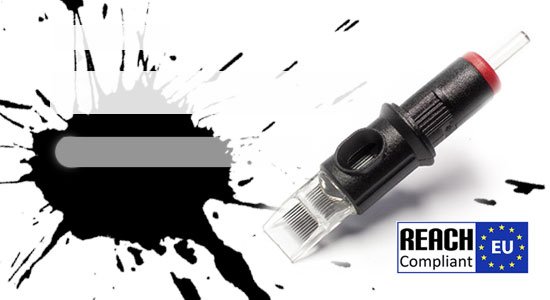


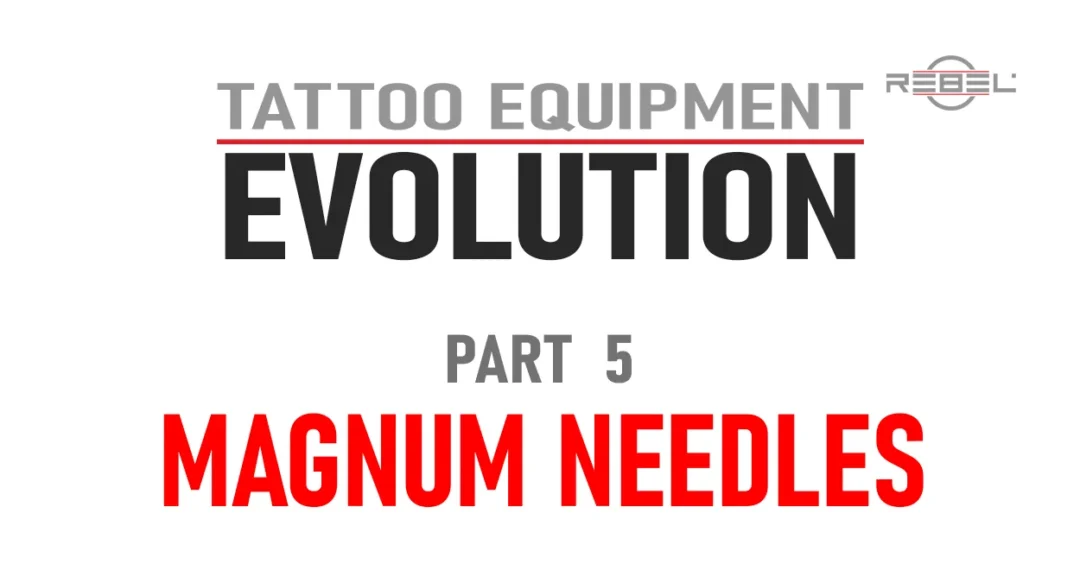
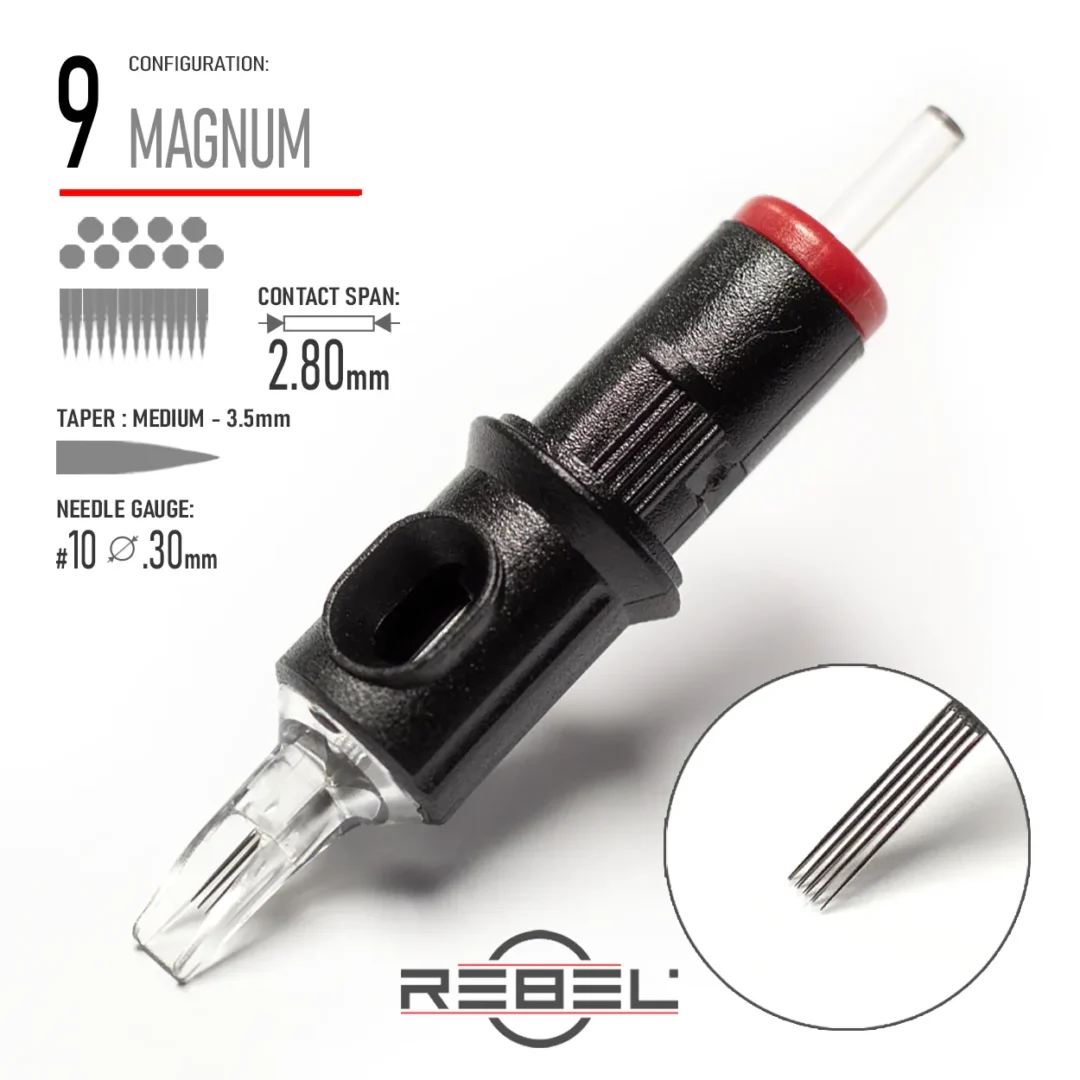
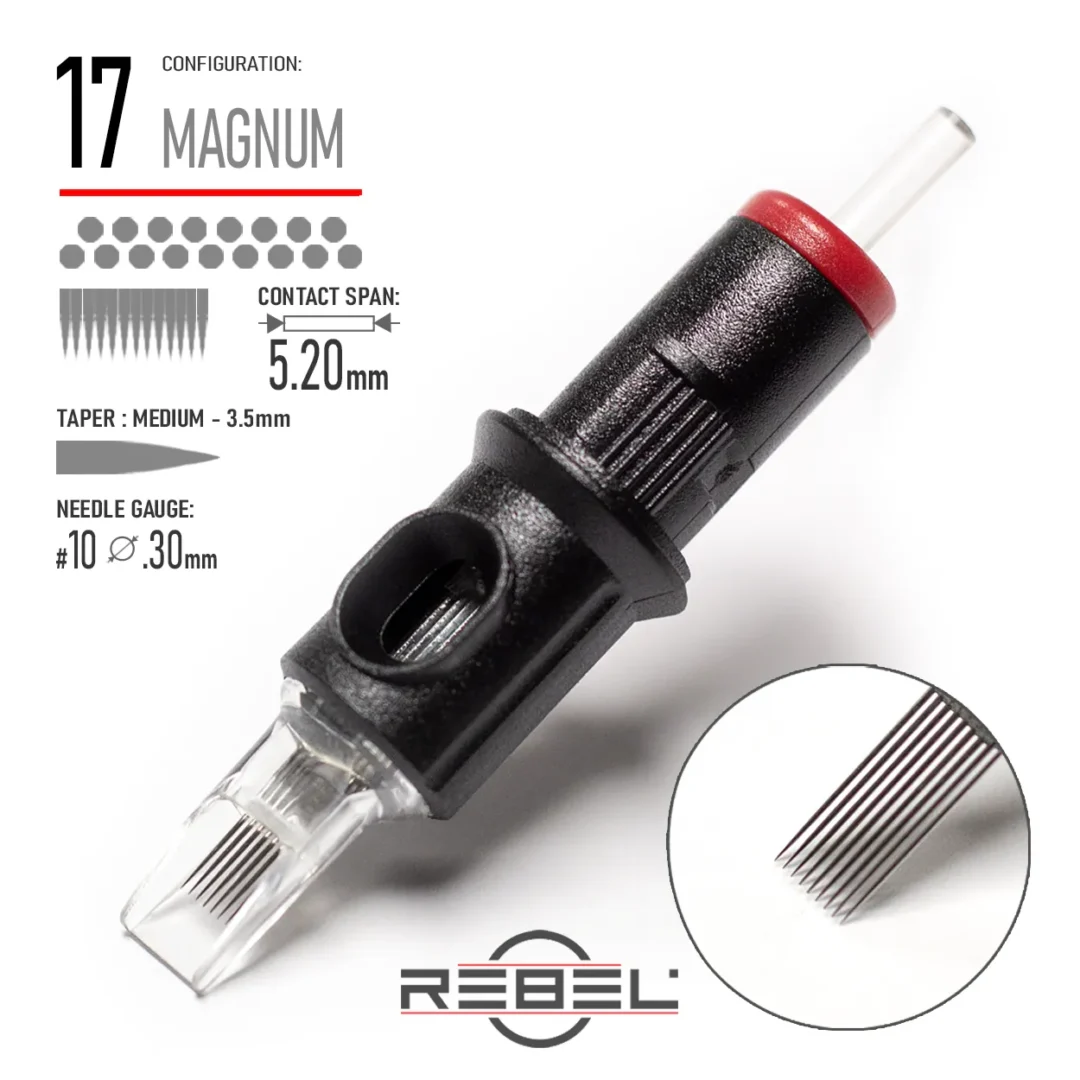
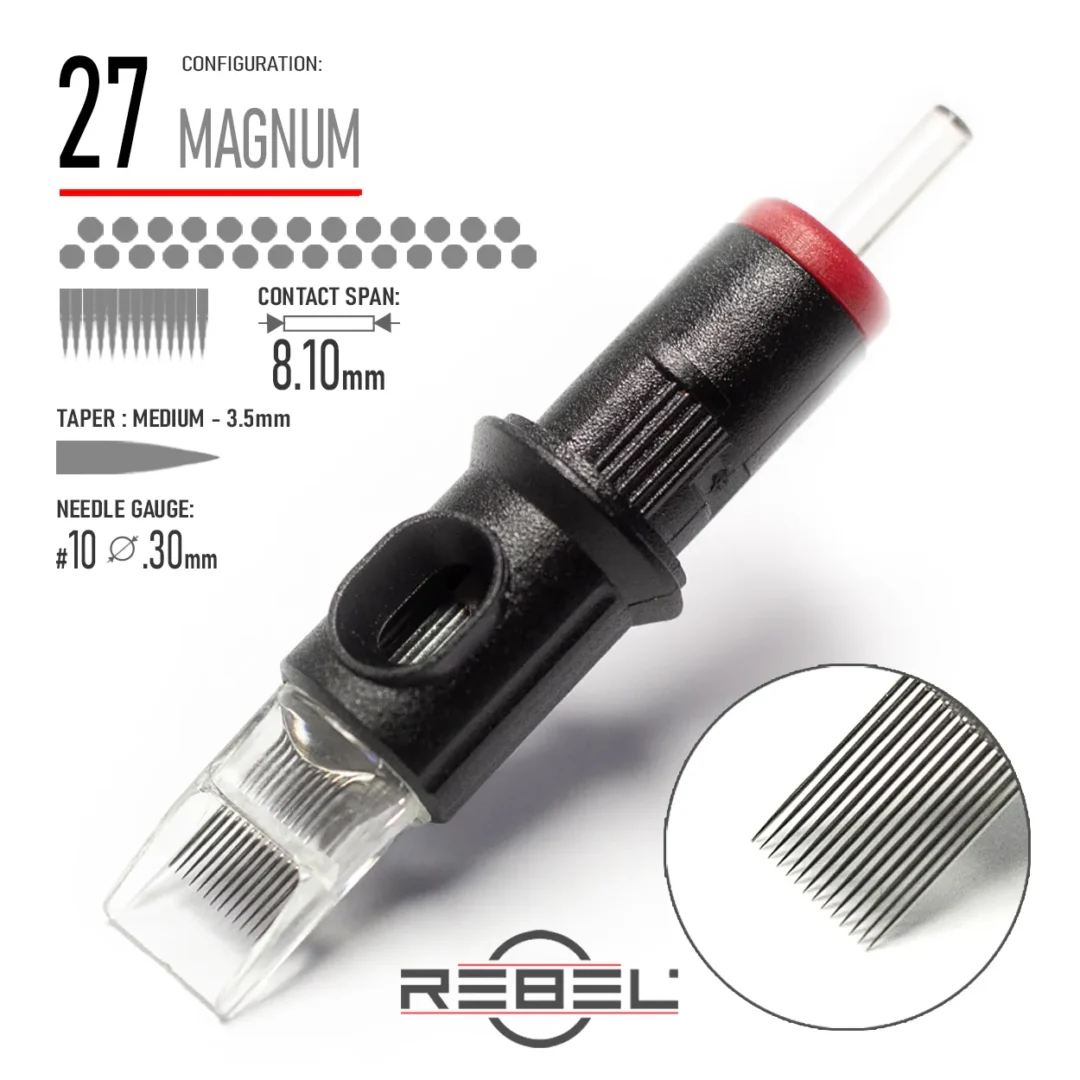
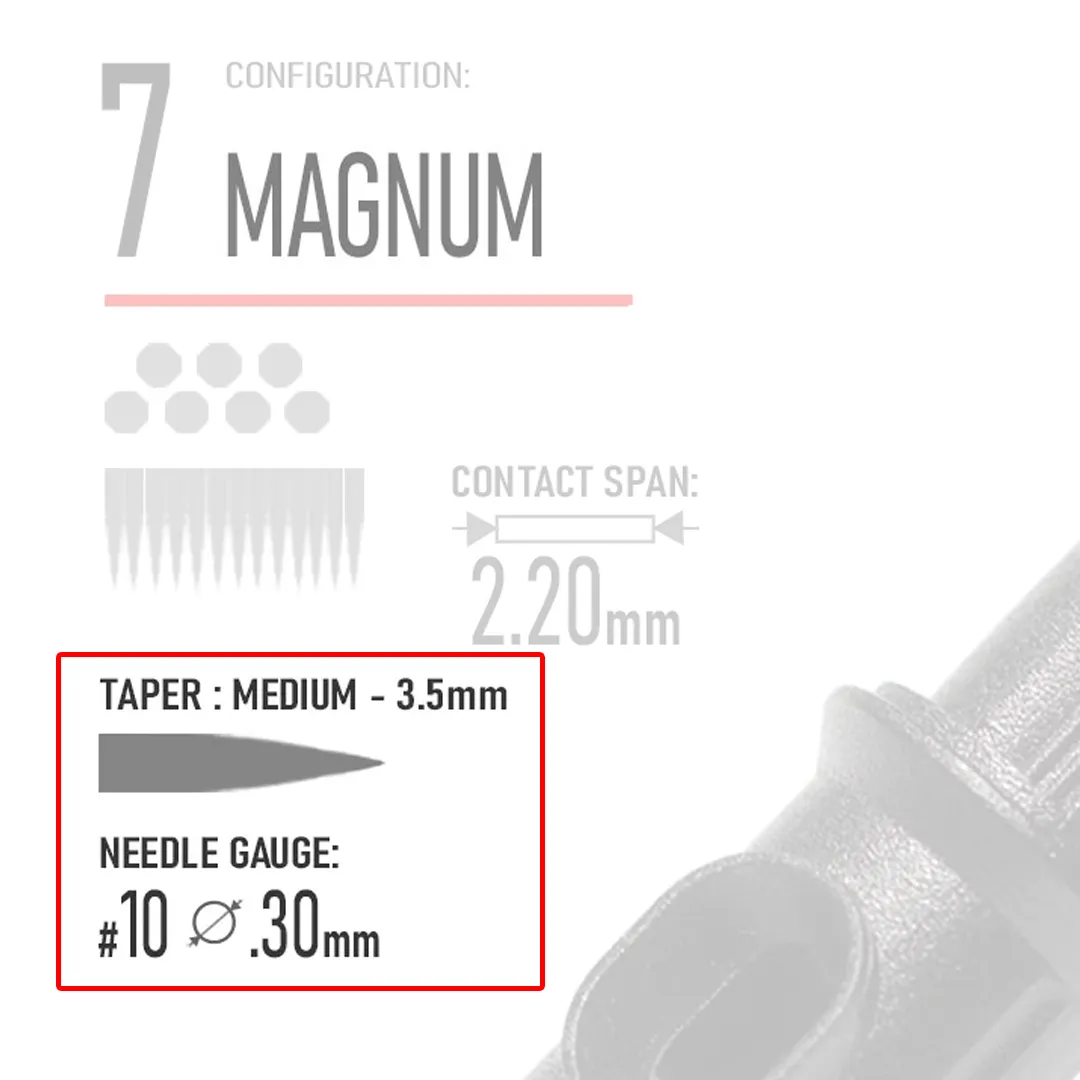
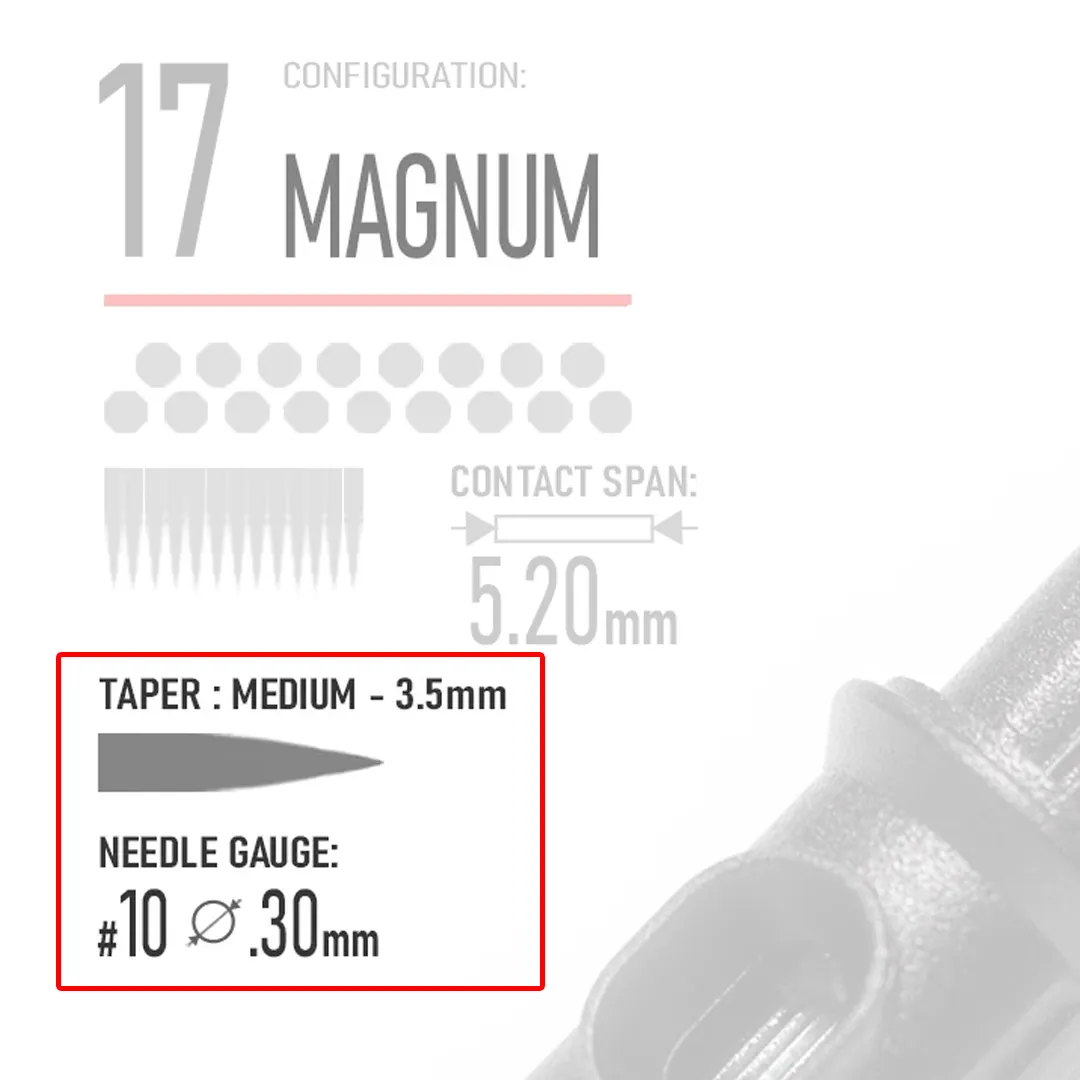
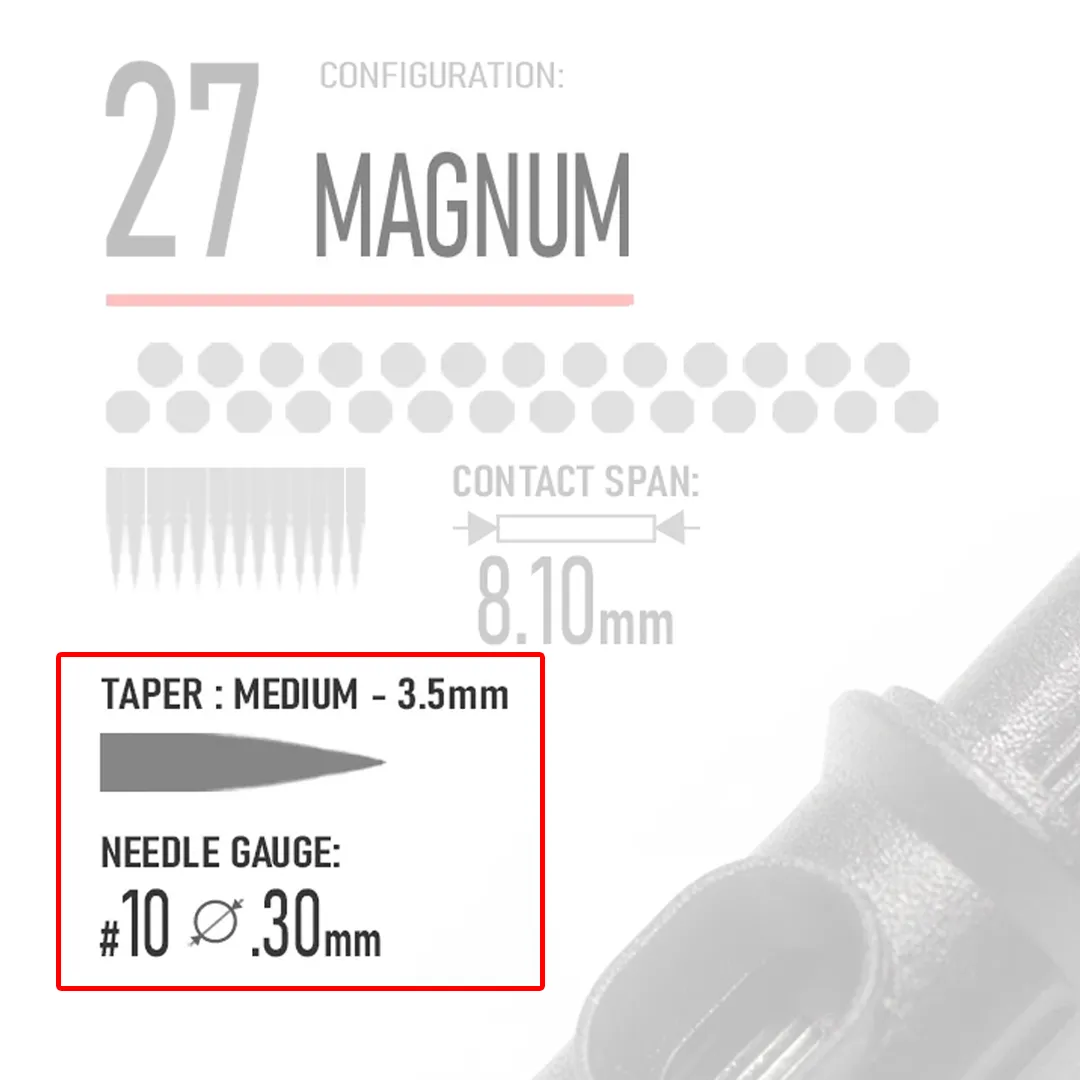
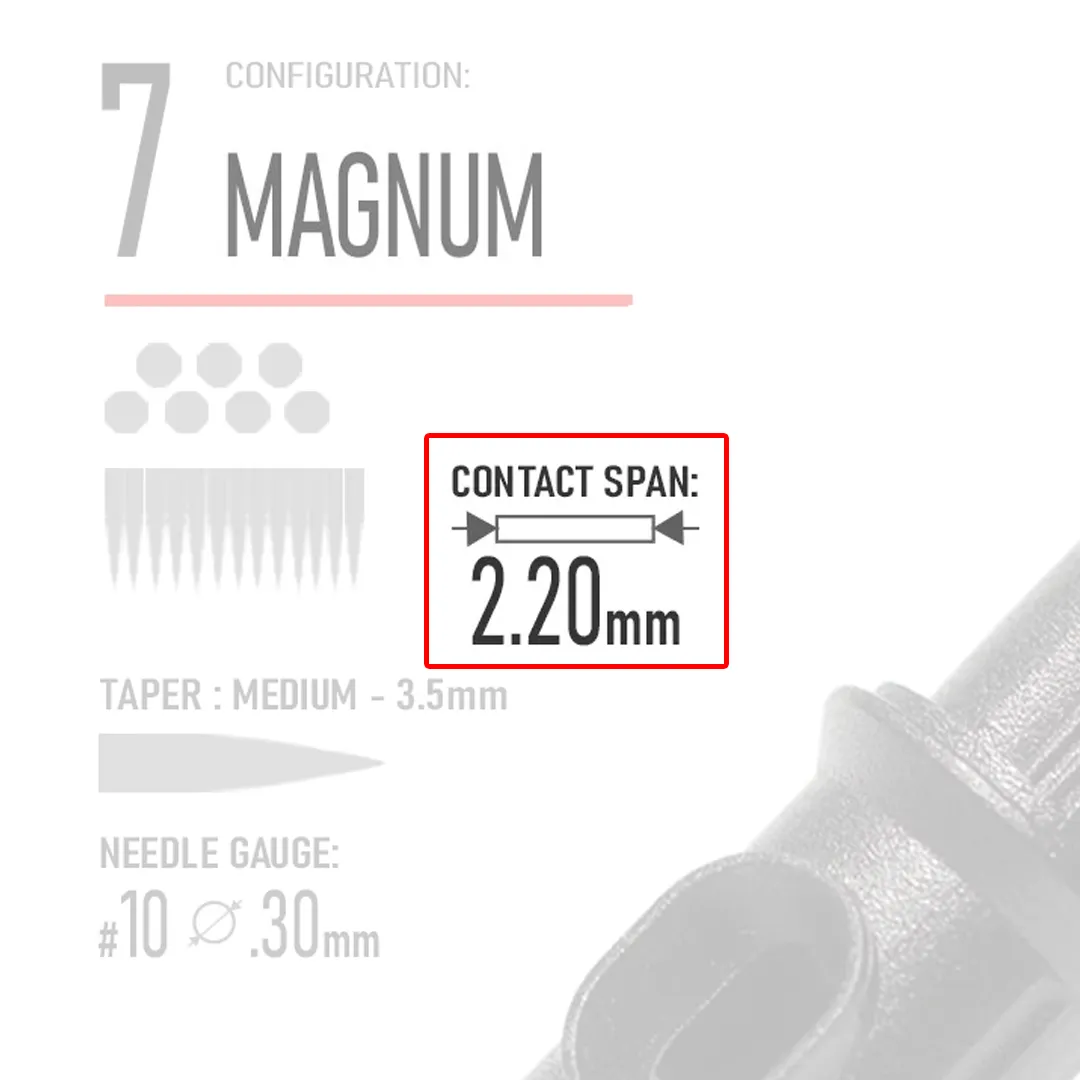
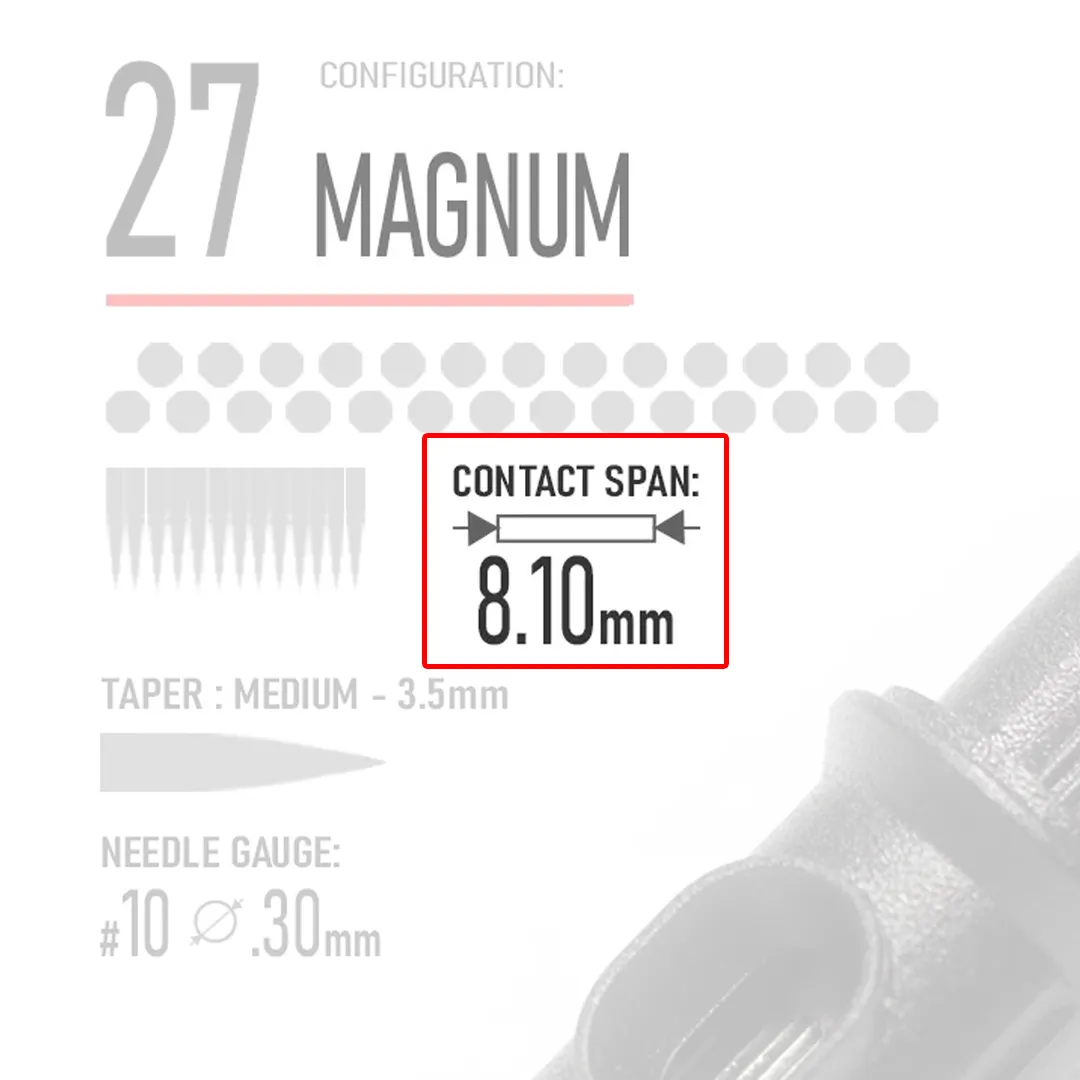
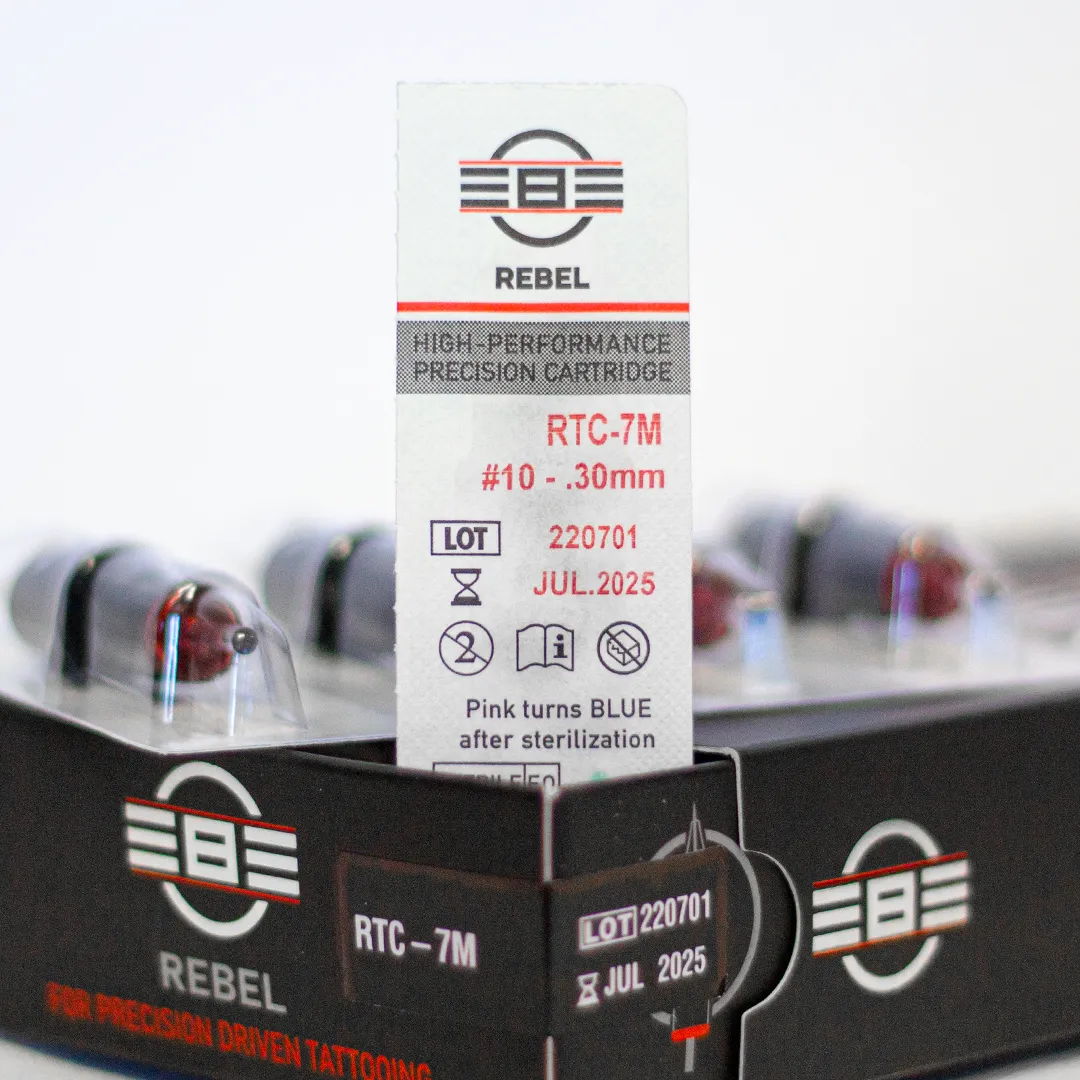
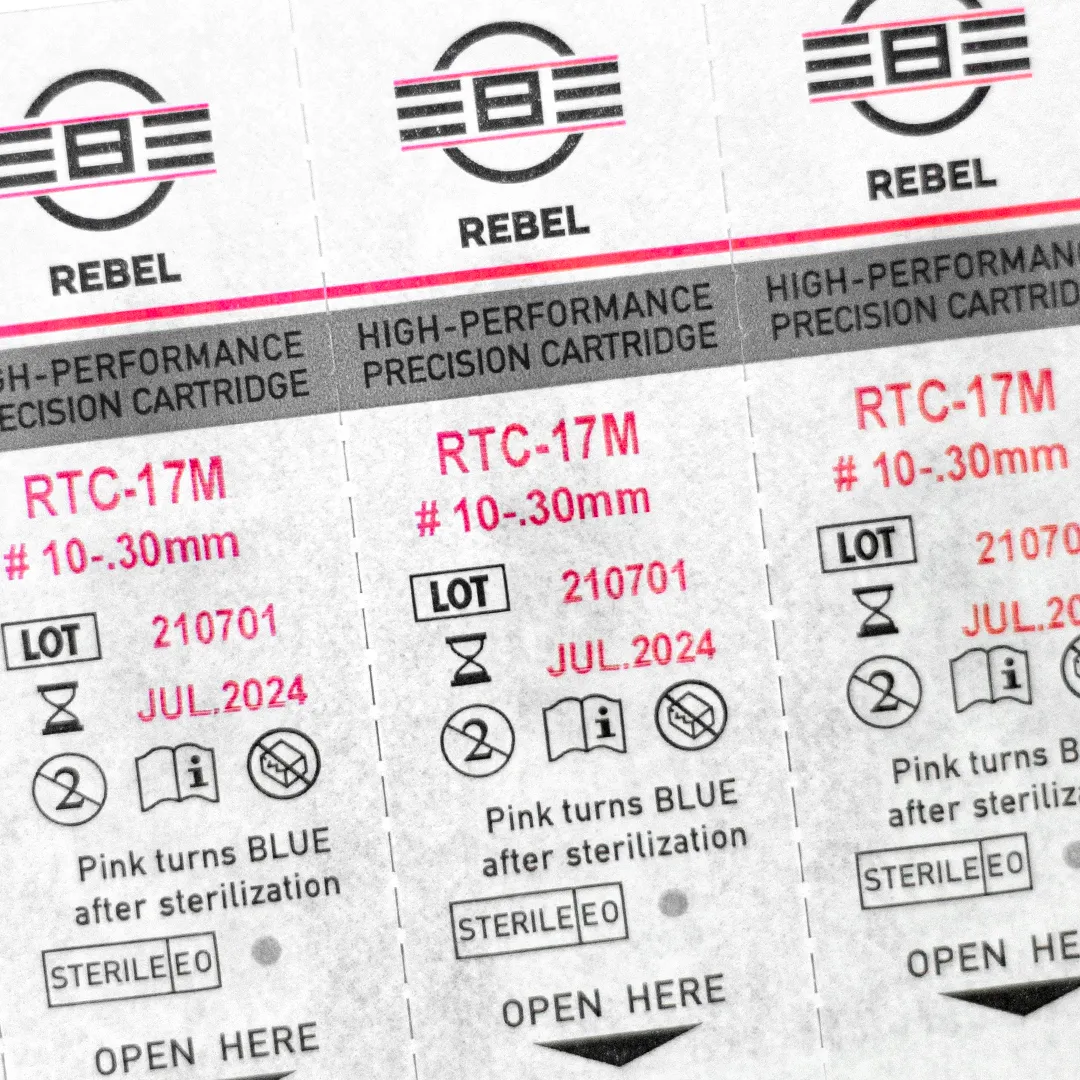
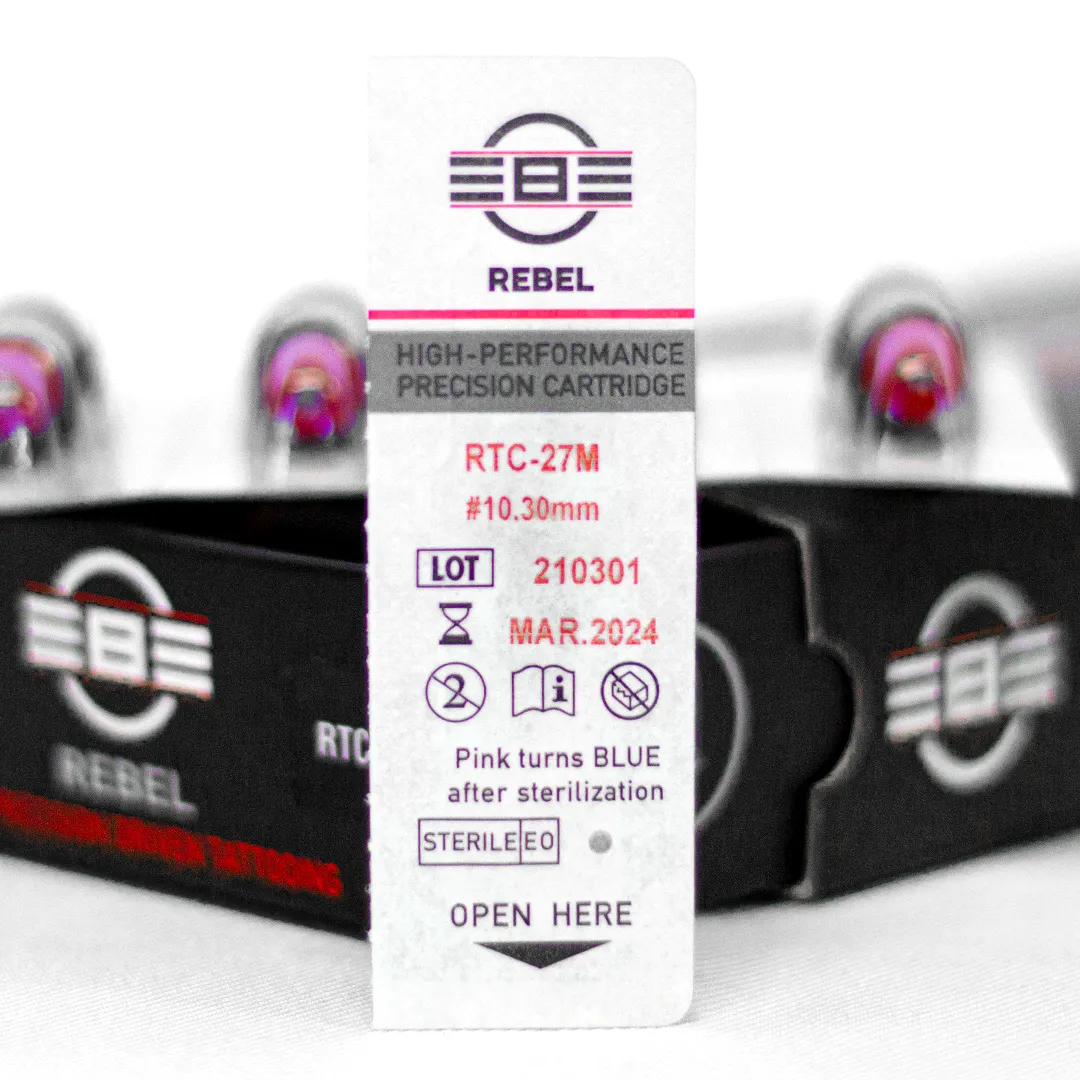

Hi Caesar!
Thank you for your informational blog on needles. I’m an RN who also does permanent make-up. I’m curious what your thoughts are re: needle size/configuration. I use a single needle to outline the lips but struggle on what to use for filling/shading the lips. Mostly I use a single needle but it takes about 5 hours which seems very long for such a small area. I’d appreciate your help and would love to buy some cartridges from you!
Hello there, thank you for your comments. Honestly, I’m not a makeup artist and don’t even know one, thus I can’t really give you a responsible answer. I personally don’t use single needle liners in my tattoo work. If I need a fine line one of the REBEL Bugpin liners like 3 or 5 would be an ideal replacement. For the filling part, I probably would go for around shader or magnum/curved magnum configuration. But again, I have not made up tattoo experience.